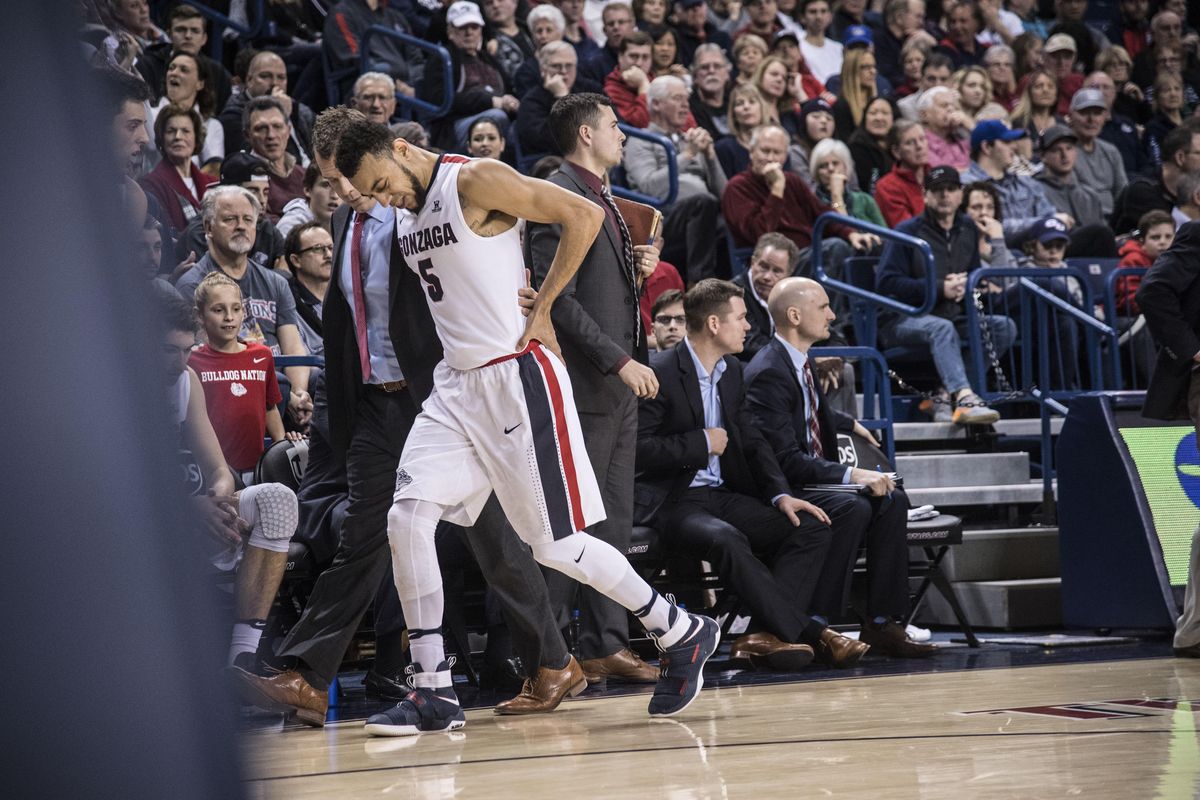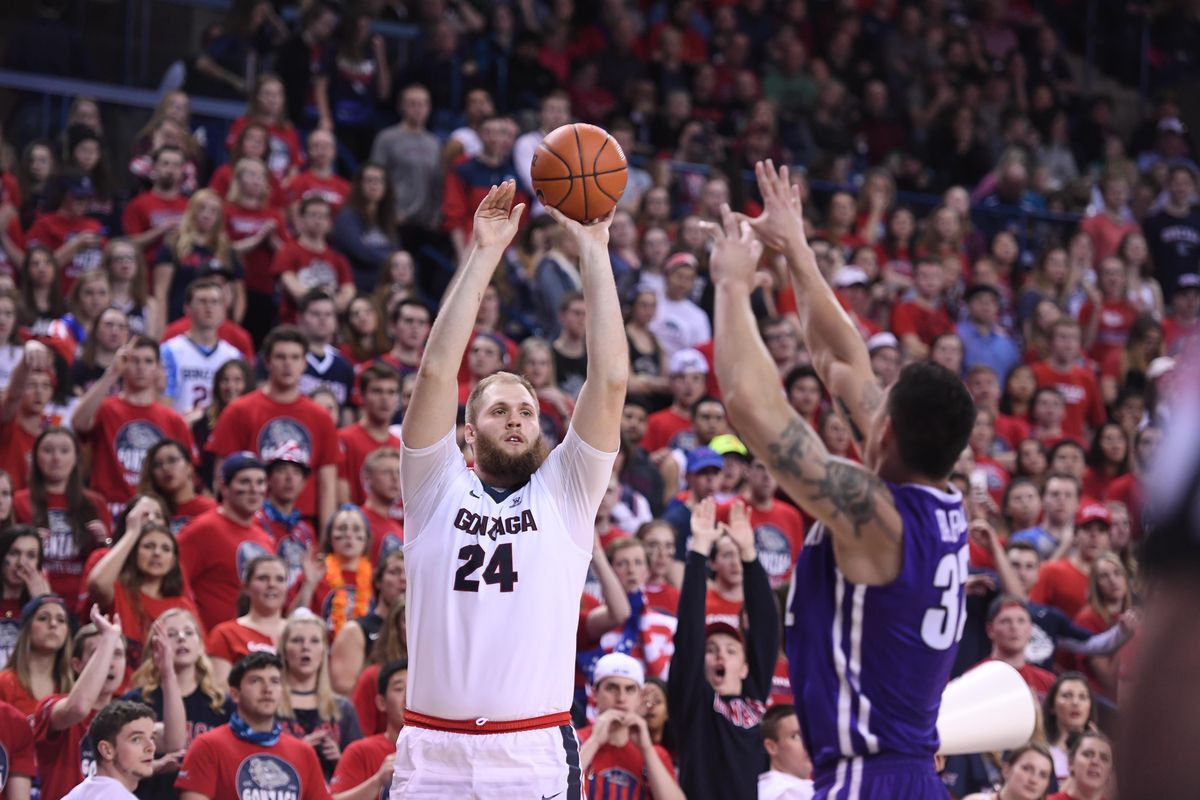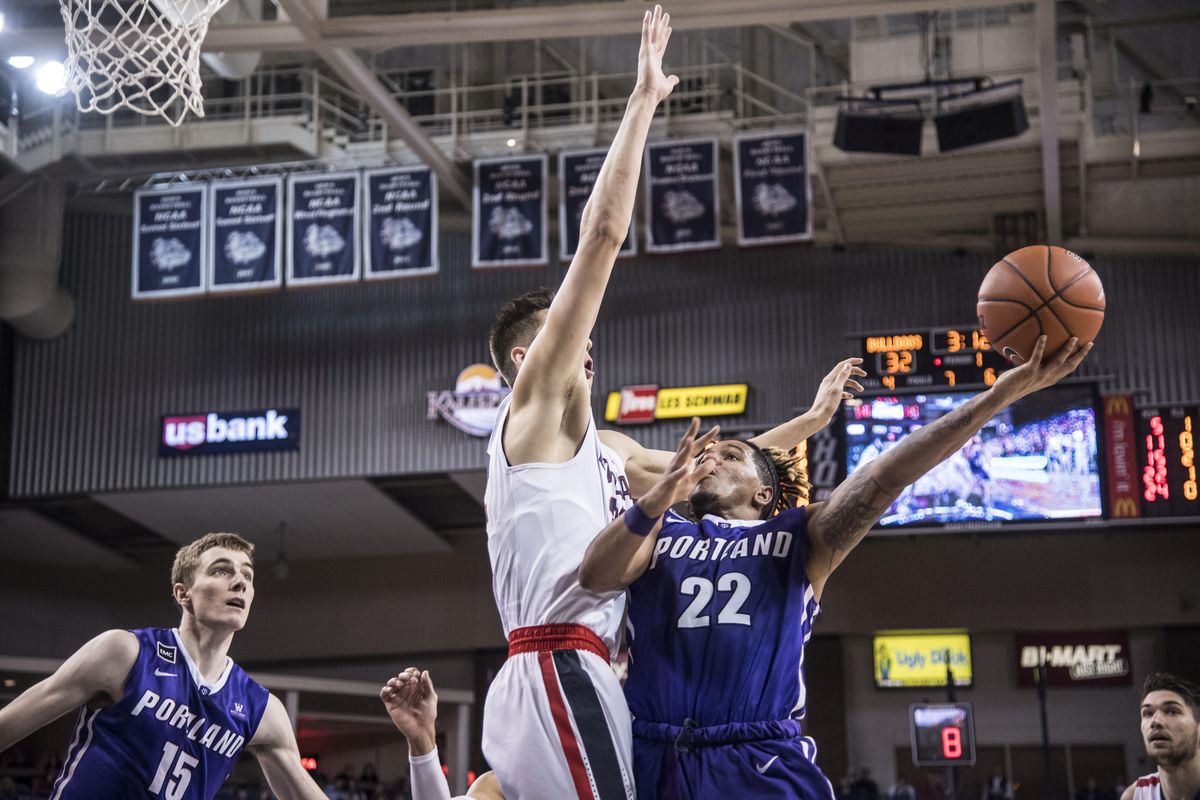Blanchette: Gonzaga, Saint Mary’s, BYU continue to dominate WCC
Gonzaga center Przemek Karnowski (24) shoots the ball during first half of an NCAA basketball game, Sat., Jan. 21, 2017, in the McCarthey Athletic Center. (Colin Mulvany / The Spokesman-Review)Buy a print of this photo
The Look What You’ve Got Yourself Into Tour finally pulled into McCarthey Athletic Center on Saturday evening.
But all they were selling at the souvenir stands were “Last Undefeated Team” T-shirts for the home favorites.
Terry Porter was one of the great underdog success stories as an NBA player, unearthed from the NAIA ranks straight into a 17-year career built on being smart and skilled and willing. Made the All-Star Game a couple of times, took the Portland Trail Blazers to two NBA Finals, segued into an encore that saw him become head coach of the Bucks and Suns.
Now he’s back for Chapter 3, trying to create another buzz in his adopted hometown as head coach of the University of Portland Pilots. And the main mission: closing the expanse that separates the lower-middle class of the West Coast Conference with the upper crust – and, in particular, Gonzaga.
It could be going better.
The Pilots arrived in Spokane on a four-game slide, including losses by 28, 41 and 25 points. Once here, they learned their all-WCC point guard, senior Alec Wintering, had torn an ACL on Thursday, a rotten end to a terrific career.
Still, their siccum in a 73-52 loss that ran Gonzaga’s record to 19-0 was the night’s highlight.
SWX
Porter is one of four new coaches in the WCC this season and the first to visit McCarthey, though the Bulldogs have encountered the other three – Damon Stoudamire of Pacific, Kyle Smith of San Francisco and Herb Sendek of Santa Clara – on the road. The firings of their four predecessors made for the biggest off-season purge in league history.
That’s an unhappy confluence, though possibly the timing is coincidental.
But we know well the numbing duration of Gonzaga’s dominance of the league. We know, too, that only once since Brigham Young joined the league has someone other than the Zags, Cougars or Saint Mary’s finished in the top three, and not since 2008 has another school made the WCC tournament final.
The anecdotal evidence is also damning. Gonzaga’s average margin of WCC victory at home actually fell Saturday – to 28 points a game.

Also today: Take a look at Thursday’s game by the numbers.
“When you talk about those three schools, the gap is the size of the Grand Canyon,” admitted Porter in a conversation Friday. “The other seven are really fighting to crack that ceiling, so to speak.”
How the WCC got to this place is a long and dreary tale, and inevitably resources are cited – though Gonzaga didn’t go all-in on basketball until after it made its own luck and mania with those breakthrough NCAA runs at the millennium. BYU arrived in the the league with a pedigree; Saint Mary’s pedaled away from the peloton to dog the leader and enhance its profile.
Which suggests that it’s difficult to talk about investment in basketball without success – and success has never been harder to come by in the league. If your initial grail is, well, fourth place, just how jazzed is that going to get your donors and customers? There is some obligation that comes with membership, yes, but commitment has to be justified campus by campus.
Sometimes it seems as if the only commitment is to the coaching change.
In the 18 years since the Zags made that first Elite Eight run, there have been 27 coaching changes in the WCC. Seventeen of those were firings; in just three cases did coaches move on to better jobs, though only one – Dan Monson of GU to Minnesota – involved a Power 5 school.
The previous 18 years: 22 changes, but just seven firings. And seven coaches moved up – three to Pac-12 jobs, another to the Big 12, yet another to an NBA head coaching position.
The days grow shorter for smaller prizes.
“But I don’t think the WCC’s been a quick-hook league,” said Zags assistant Tommy Lloyd. “A lot of those coaches had six, seven, eight years – almost double the norm. After that kind of time, administrations make changes if they don’t see success. That’s just the nature.”
True enough, three of the recently sacked – UP’s Eric Reveno, Santa Clara’s Kerry Keating and USF’s Rex Walters – averaged nine years at their schools. There was patience, if not investment.
The new foursome is an interesting mix: the NBA cachet of Porter and Stoudamire, the proven Division I winner – 424 games and three different schools to the NCAAs – in Sendek, and the Bennett disciple Smith, who forged basketball success Columbia hadn’t seen since the Strawberry Statement days.
Yet the task remains ever daunting.
“I think there are always cycles where the other seven schools have the opportunity to challenge,” Porter said, “but those three have sustainability and that’s tough to put together.”
But that’s what he’s got himself into. Get that man a souvenir T-shirt.
The Spokesman-Review




















